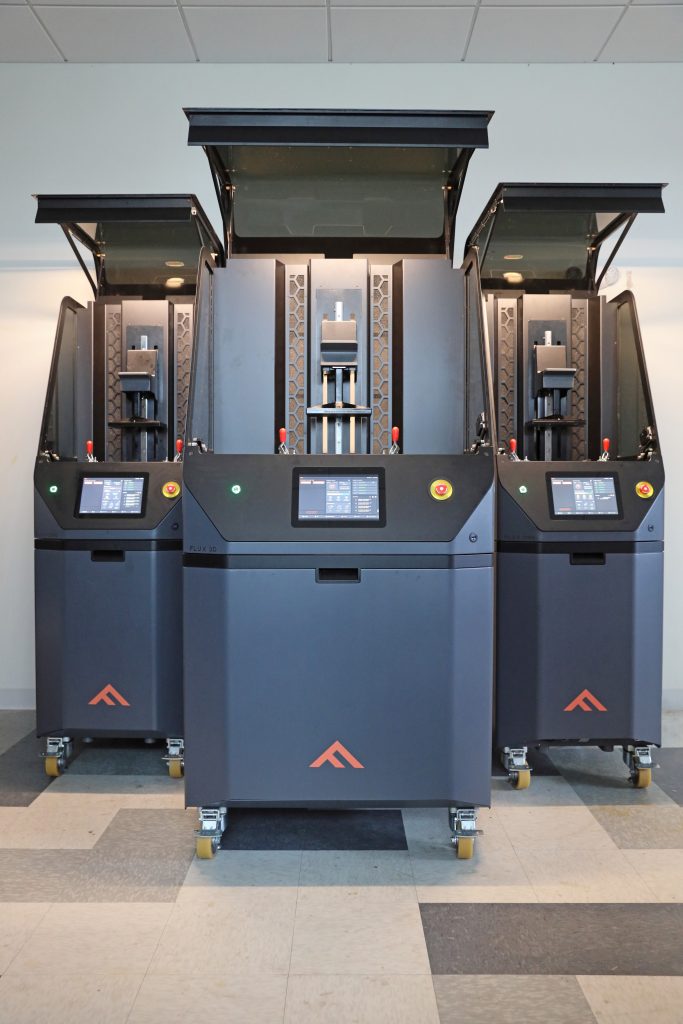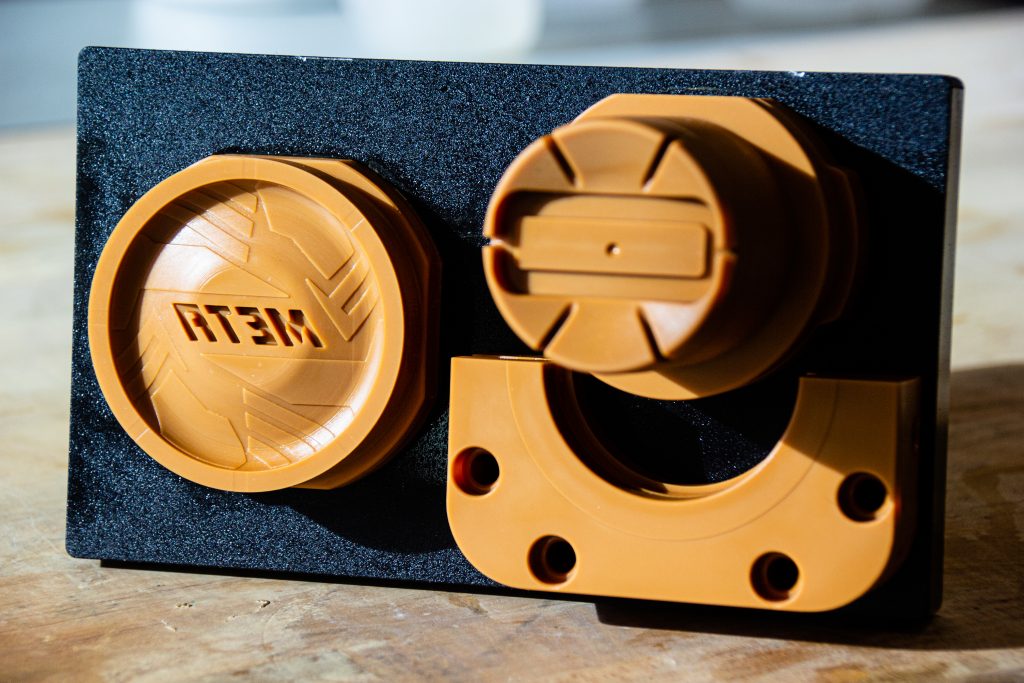The ability to print high-value materials for unique EUP applications in additive manufacturing is making headway with Fortify’s expanded FLUX series product portfolio. Fortify is tackling the problem of limited materials in 3D printing head one with the announcement of two new 3D printers and a developer’s kit supplementary software package to its product line.
The new printers – FLUX CORE and FLUX 3D offer Fortify’s unique mixing and Fluxprint magnetic alignment technologies in new configurations to better serve the technical and economic requirements of specific applications. And Fortify’s Flux Developer software platform now provides user access to develop their own materials on these powerful platforms.
In order to break down these new options into bite-sized chunks, Fortify launched a series of online ‘Tech Talks.’ These include information about the new products, applications highlights, and dives deep into the proprietary CKM and Fluxprint technologies. Those interested in finding out more can access the free virtual seminars here.
“The novel technologies built into the FLUX Series printers can be leveraged for a variety of use cases,” explained Josh Martin, CEO and Co-founder of Fortify. “While there’s room for growth in the tools and fixtures market, an area that Fortify is currently providing value in with our reinforced materials, there is an order of magnitude greater market potential for end-use part applications.”
“By providing versions of our FLUX printers tailored for specific use cases, we are giving users the power to go after these markets.”

Fortify’s CKM technology
Since it was founded in 2016, Fortify has been on a mission to open the aperture of additive manufacturing applications via the use of high-value composite materials. To accomplish this, the company produces machines powered by its Digital Composite Manufacturing (DCM) platform, which includes its proprietary Fluxprint and CKM technologies.
Essentially, Fluxprint combines magnets with Digital Light Processing (DLP), in a way that allows users to align fibers within a material, and achieve desirable properties like enhanced durability, strength, and stiffness. CKM works in conjunction with Fluxprint to ensure that performance-boosting additives are uniformly distributed in resins without aggolomeration or sedimentation.
In the past, Fortify has worked with material producers such as DSM to experiment with its technologies, creating composites for 3D printing structural parts, as well as partnering with Henkel to develop optimized industrial resins that yield parts with magnetically-aligned fibers.
Since then, the company has gone a step further, and commercialized its technology with the release of its first CKM-powered machine, the FLUX ONE. The launch was followed by a $20 million funding round, raising capital that Fortify is now using to fund the release of two new systems, that feature varying levels of functionality to meet the needs of its clients within different end-use applications.

Application-focused 3D printing
With the new FLUX CORE, Fortify is effectively marketing a stripped-back FLUX ONE, that’s designed to be used by customers with no need for particle alignment technology. In areas like Radio Frequency (RF) device manufacturing, for instance, materials often consist of non-magnetically-responsive spherical particles which don’t require alignment.
By contrast, Fortify’s larger FLUX 3D machine is capable of generating a powerful magnetic field, that provides users with an “unprecedented level of control” over fibers. While the FLUX ONE aligns material fibers in the very important Z-axis, the new 3D enables precise control across all three axes, allowing them to follow the contours of end-use parts like thin-walled electrical connectors.
Alongside its new printers, Fortify has also launched the Flux Developer software, which allows users to finely tweak each of the machine’s print parameters, and explore new material formulations and additives. Compatible with the entire FLUX range, the program enables adopters to control variables such as material flow, temperature and viscosity as well as build plate mechanics, and create materials to meet their specific needs.
“With growing excitement around our capability to process filled photopolymers, we are seeing demand from customers who want to explore materials beyond our current offerings,” said Ben Arnold, VP of Business Development at Fortify. “Flux Developer is the toolkit they need to test and optimize new materials for their targeted applications.”

Fortify’s online tech talks
Designed to supplement its newly-expanded FLUX portfolio, Fortify has also launched eight informative Tech Talks, that provide a deep-dive into its products and their potential applications. Viewers can expect to find out more about how the firm’s machines can help deliver mold tools and RF devices with new functionality, as well as parts with conductivity, thermal and ESD-related applications.
Other tech talk highlights include videos revealing the capabilities of the new Flux Developer software, in addition to an in-depth exploration of how Fortify’s material partnerships have advanced its technology. The bite-sized tutorials are delivered by the company’s own technical experts, including CEO and Co-Founder Josh Martin, providing new users with the best possible insight into Fortfiy’s new FLUX offering.
Those interested in finding out more about Fortify’s technology and product portfolio, can now access the video series via the Tech Talk website.
To stay up to date with the latest 3D printing news, don’t forget to subscribe to the 3D Printing Industry newsletter or follow us on Twitter or liking our page on Facebook.
Are you looking for a job in the additive manufacturing industry? Visit 3D Printing Jobs for a selection of roles in the industry.
Featured image shows The FLUX Core and FLUX One 3D printers. Photo via Fortify.



